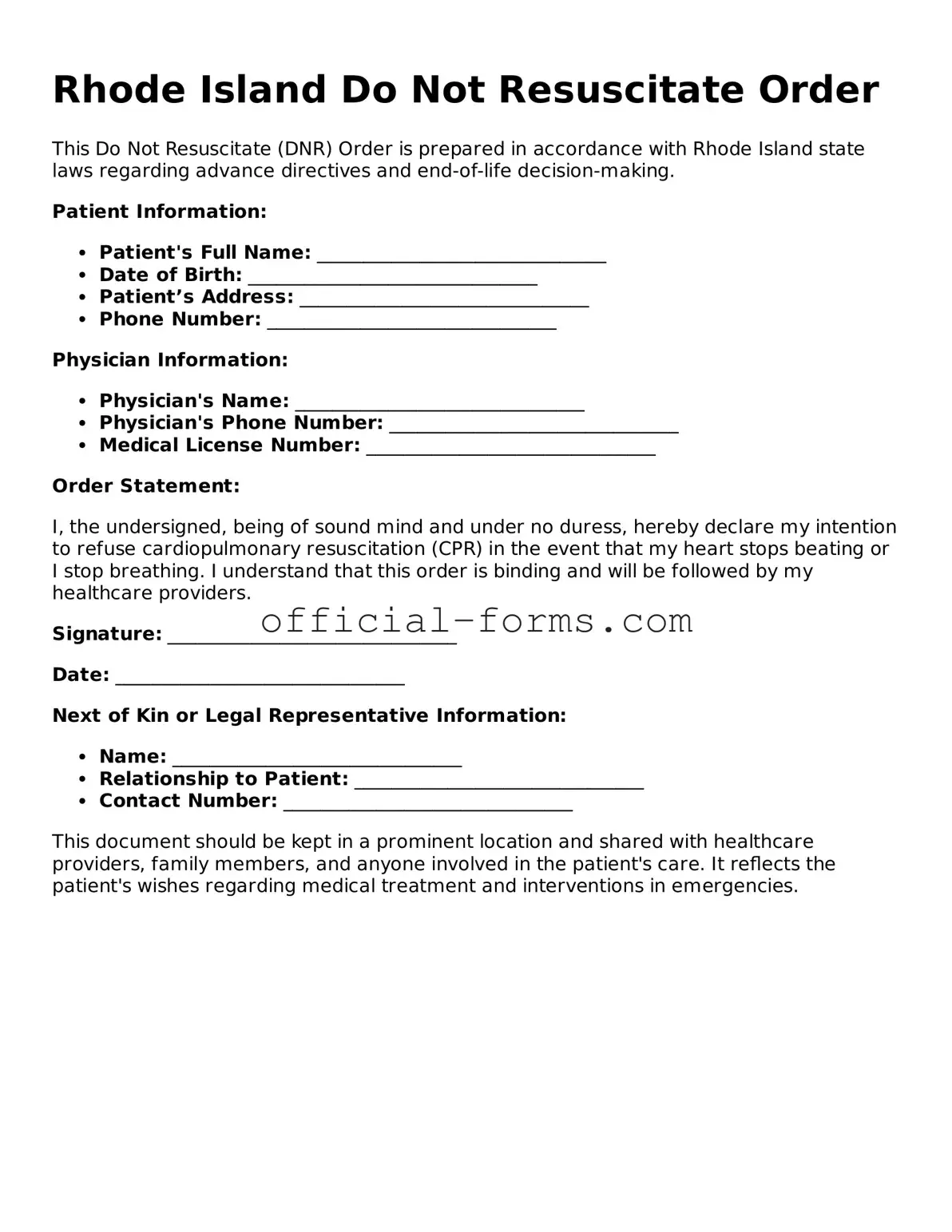Official Rhode Island Do Not Resuscitate Order Document
A Rhode Island Do Not Resuscitate (DNR) Order form is a legal document that allows individuals to express their wishes regarding resuscitation efforts in the event of a medical emergency. This form ensures that patients who do not wish to receive life-saving treatments can have their preferences honored by medical professionals. Understanding how to properly complete and utilize this form is essential for anyone considering end-of-life care options.
Open My Do Not Resuscitate Order Now
